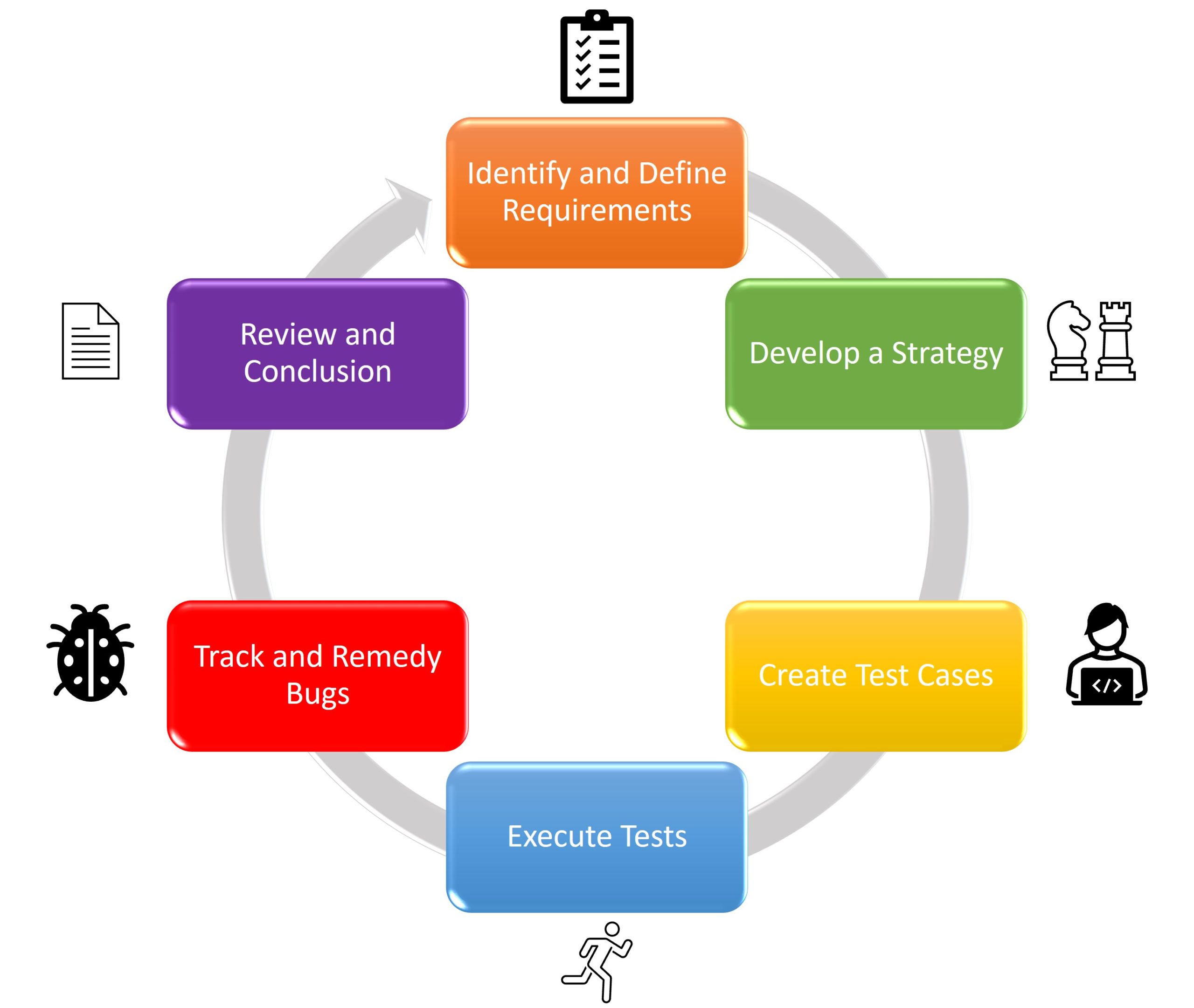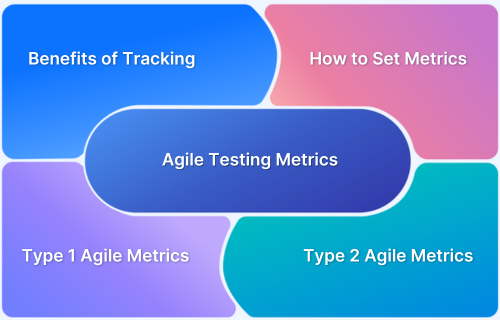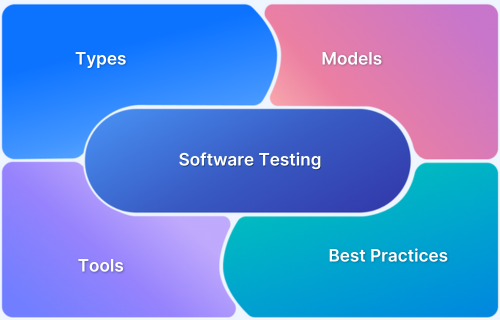The Software Testing Life Cycle (STLC) is a critical process that ensures the delivery of high-quality software. It involves a series of well-defined stages, from requirement analysis to test execution and reporting. By following STLC, teams can identify defects early, improve efficiency, and ensure that the final product meets the desired standards.
Overview
The Software Testing Life Cycle (STLC) refers to a set of steps or phases followed during the testing process of software development. It outlines the sequence of activities to ensure that the software meets the desired quality standards and is free from defects.
Purpose
The purpose of STLC is to ensures software quality by following a structured testing process that detects defects early, saving both time and costs.
Importance
STLC provides a systematic approach to testing, ensuring consistent quality throughout the development process. By following defined phases, it helps reduce the risk of undetected defects, improves test coverage, and provides clear visibility into the testing progress, enabling better decision-making and smoother project execution.
Phases of STLC:
- Requirement Analysis
- Test Planning
- Test Design
- Test Execution
- Find and Fix Bugs
- Reporting and Analysis
This article explores the key phases of STLC and their benefits in the software development process.
What is the Software Testing Life Cycle?
The Software Development Life Cycle (SDLC) illustrates the phases of life a piece of software goes through from the point of its creation. Similarly, the Software Testing Life Cycle (STLC) illustrates the phases of testing that a certain piece of software must go through in order to meet certain specified quality requirements.
STLC defines steps that should be followed when attempting to thoroughly test a piece of software in a planned manner. Each phase of the software testing life cycle has a purpose, and defines a goal that needs to be achieved in order to further test and ensure the quality of the software.
How is the STLC different from the SDLC?
Although the two life cycles are similar in that they are both generally depicted as having six steps and are centered around a piece of software; Significant differences exist between the STLC and SDLC.
The main difference between these two life cycles is that the SDLC centers around making a piece of software and dealing with the requirements and responsibilities that come with it. However the STLC centers around testing a piece of software in order to find and fix any defects that may exist.
| Aspect | STLC | SDLC |
|---|---|---|
| Definition | A systematic process for testing software. | A systematic process for developing software. |
| Focus Area | Focused on testing and quality assurance. | Focused on software development and delivery. |
| Phases | Requirement analysis, test planning, test case development, test environment setup, test execution, and test closure. | Requirement gathering, system design, implementation, testing, deployment, and maintenance. |
| Objective | To verify and validate the software meets requirements and is bug-free. | To create functional, efficient, and user-friendly software. |
| Stakeholders | Primarily testers and quality assurance teams. | Involves developers, testers, stakeholders, and business analysts. |
| Output | Test cases, defect reports, and a test summary report. | A fully functional software product. |
| Dependency | Dependent on the SDLC for inputs like requirements and code. | Independent; drives the software creation process. |
| Involvement in Testing | Starts after code is developed or as requirements are defined. | Covers all stages, including testing as one phase. |
| Scope | Narrow, focusing solely on testing and validation. | Broad, encompassing the entire software development process. |
What are the Phases of the STLC?
The phases of the STLC can vary depending on the team’s priorities and the software project in question. However the rudimentary phases in every STLC are common for most software projects.
As illustrated above the STLC has 7 major phases which are cycled through clockwise by test engineers.
1. Identify and Define Requirements
The first phase of the life cycle directs test engineers to identify the aspects of the application that need to be tested and define the requirements for the tests. This phase also encompasses the definition of what kinds of tests need to be performed.
During the execution of this phase the QA team will often try to define which tests need to be prioritized and where they should focus their efforts.
Often the team may identify that they don’t quite understand how or why they are required to test certain aspects of the application. This phase makes the team hash out the details and communicate more effectively with developers and other stakeholders to gain insight as to what exactly is required of them as they test the software.
To summarize, the key steps of this phase are:
- Identifying the different modules of the software that need to be tested.
- Defining what tests need to be performed.
- Defining potential methods for testing, for example: whether or not automation can be utilized for the tests?
- Defining the requirements for these tests, such as the environment or perhaps other software which may be required.
- Defining the deliverables.
2. Develop a Testing Strategy
In this phase the planning aspect of the software testing process is carried out. The effort and cost that may be required are estimated in order to create a schedule for the tests. Additionally, the strategy to most efficiently execute tests is sketched out, taking into account the requirements defined in the previous phase.
To summarize, the key steps of this phase are:
- Test Planning, the strategy to efficiently carry out tests is decided, and a Test Plan document is created.
- The potential budget, time, labor, and effort that may be required, as well as the environment and testing tools are taken into consideration to form a cohesive plan. For example: Whether there is a need to carry out testing on a Real Device Cloud, or another paid testing tool is taken into account in order to devise a plan that fits into the budget available.
- The roles and responsibilities of each member in the team are defined at this phase.
Read More: Software Testing Strategies and Approaches
3. Create Test Cases
This phase of the STLC involves fleshing out the actual test cases which will be used to test the software. The test cases are created according to the test plan defined in the previous phase. There may be several iterations of this phase as test engineers design, cross-check, and rework these test cases to adhere to the Test Plan document.
To summarize, the key steps of this phase are:
- Creating and defining test cases.
- Creating test suites if needed.
- Writing automation test cases.
- Generating test data or obtaining test data from other appropriate sources.
- Diligent Test Case Management
- Use Test Case Prioritization
Read More: Test Case Reduction and Techniques to Follow
4. Execute Tests
This phase involves setting up the environment required for the test cases and then running the individual test cases. The test scripts written in the previous phase of STLC are executed and the results are logged.
To summarize, the key steps of this phase are:
- Defining the requirements for the test environments which will be needed to execute test cases.
- Setting up the hardware and software environment that will be needed to execute tests.
- Carrying out smoke tests to ensure the environment is suitable.
- Running test cases and test suites.
Pro Tip: It is highly recommended to run tests on real devices and browsers over emulators and simulators for more accurate test results keeping real user conditions into account. BrowserStack allows QA to access 3500+ real devices and browsers for a comprehensive testing.
5. Find, Track and Fix Bugs
This phase involves using the results from the test case execution phase to identify defects and fix them.
To summarize, the key steps of this phase are:
- Log the test case runs and identify the defects in failed test cases.
- Revert the bugs found to the developer team.
- Create a defect report
- Retest the fixed versions, and if further defects are found then repeat the previous two steps.
Read More: How to write an Effective Bug Report
6. Reporting and Analysis
This is the last phase of the Software Testing Life Cycle. This phase constitutes the QA team preparing a final report summarizing the test process and the results obtained. These reports will often compare the expected vs true use of time, cost, and other resources.
To summarize, the key steps of this phase are:
- Create a Test Summary Report and Log Metrics relevant to the test process.
- Preprare a report of the testing process and results.
- Evaluate how accurate the initially defined requirements and strategy were.
Entry and Exit Criteria for STLC Phases
This table provides a structured overview of the entry and exit criteria for each phase of the Software Testing Life Cycle (STLC), ensuring clarity and streamlined testing processes.
| STLC Phase | Entry Criteria | Exit Criteria |
|---|---|---|
| Requirement Analysis | Software requirements document is available, and stakeholders have provided input. | Test scenarios and requirements traceability matrix (RTM) are created. |
| Test Planning | Requirements analysis is complete, and the scope of testing is defined. | Test strategy and plan are documented and approved. |
| Test Case Development | Test plan is approved, and test data is available. | Test cases and scripts are created, reviewed, and approved. |
| Test Environment Setup | Test cases are finalized, and the required tools and environments are available. | Test environment is validated, and a smoke test is completed. |
| Test Execution | Test environment setup is complete, and test cases are ready to execute. | All planned tests are executed, and critical defects are fixed. |
| Test Closure | All test cases are executed, and defect reports are resolved. | Test summary report is prepared, and testing objectives are achieved. |
Benefits of STLC Framework
Implementing STLC framework offers several benefits, as listed below:
- Structured Approach: Provides a clear, systematic process for testing, ensuring no phase is overlooked.
- Early Defect Detection: Identifies issues in the early stages, reducing cost and time for fixes.
- Improved Test Coverage: Ensures all requirements are thoroughly tested, minimizing risks of missed scenarios.
- Enhanced Collaboration: Encourages coordination between developers, testers, and stakeholders for better outcomes.
- Quality Assurance: Guarantees a high-quality software product by following a disciplined testing process.
- Defined Roles and Responsibilities: Clarifies tasks for each phase, improving accountability and efficiency.
- Scalability and Reusability: Facilitates test case reuse and scalability for future testing needs.
- Better Resource Management: Optimizes the use of time, tools, and human resources during testing.
- Informed Decision-Making: Provides detailed documentation and reports, aiding stakeholders in making data-driven decisions.
- Customer Satisfaction: Ensures a reliable, bug-free product, improving end-user experience and trust.
Read More: How to maximize Test Coverage
How can BrowserStack help in implementing STLC?
BrowserStack enhances the Software Testing Life Cycle (STLC) by offering tools for cross-browser, web, and app testing, along with robust test management capabilities. Its platform ensures efficient test execution, defect identification, and high-quality software delivery.
For cross-browser testing, BrowserStack provides access to 3500+ real devices, operating systems, and browsers, enabling seamless compatibility testing without any setup. Its cloud-based infrastructure allows teams to focus on testing, ensuring applications perform consistently across different environments.
With web testing, BrowserStack offers Live for manual testing on real devices with debugging tools and Automate for running large-scale automated tests using frameworks like Selenium and Cypress. These tools speed up testing and provide quick feedback essential for STLC.
For mobile app testing, App Live supports manual testing of native and hybrid apps, while App Automate enables automated testing with Appium and Espresso. Debugging tools, logs, and video recordings simplify defect identification and resolution.
BrowserStack’s Test Management capabilities further strengthen its role in STLC. Teams can create and organize test cases systematically, ensuring comprehensive coverage for all application features. Its seamless integration with CI/CD pipelines helps synchronize testing with development, enabling continuous delivery.
BrowserStack also excels in generating detailed reports, complete with logs, screenshots, and video recordings, which help teams monitor execution results and resolve defects quickly.
Conclusion
The Software Testing Life Cycle (STLC) is an essential framework that ensures high-quality software delivery through its structured approach. By adhering to each phase, from requirement analysis to test closure, teams can optimize their testing efforts, reduce risks, and achieve reliable, user-friendly applications.
BrowserStack integrates seamlessly into the Software Testing Life Cycle (STLC), offering a suite of tools for both manual and automated testing across web and mobile platforms. Its test management tool helps teams efficiently create, manage, and log test cases.








